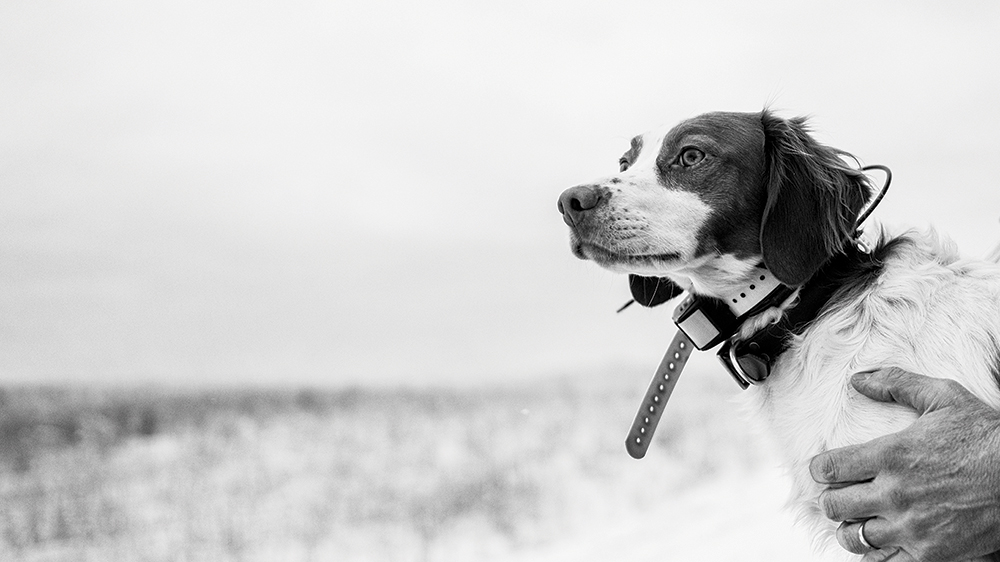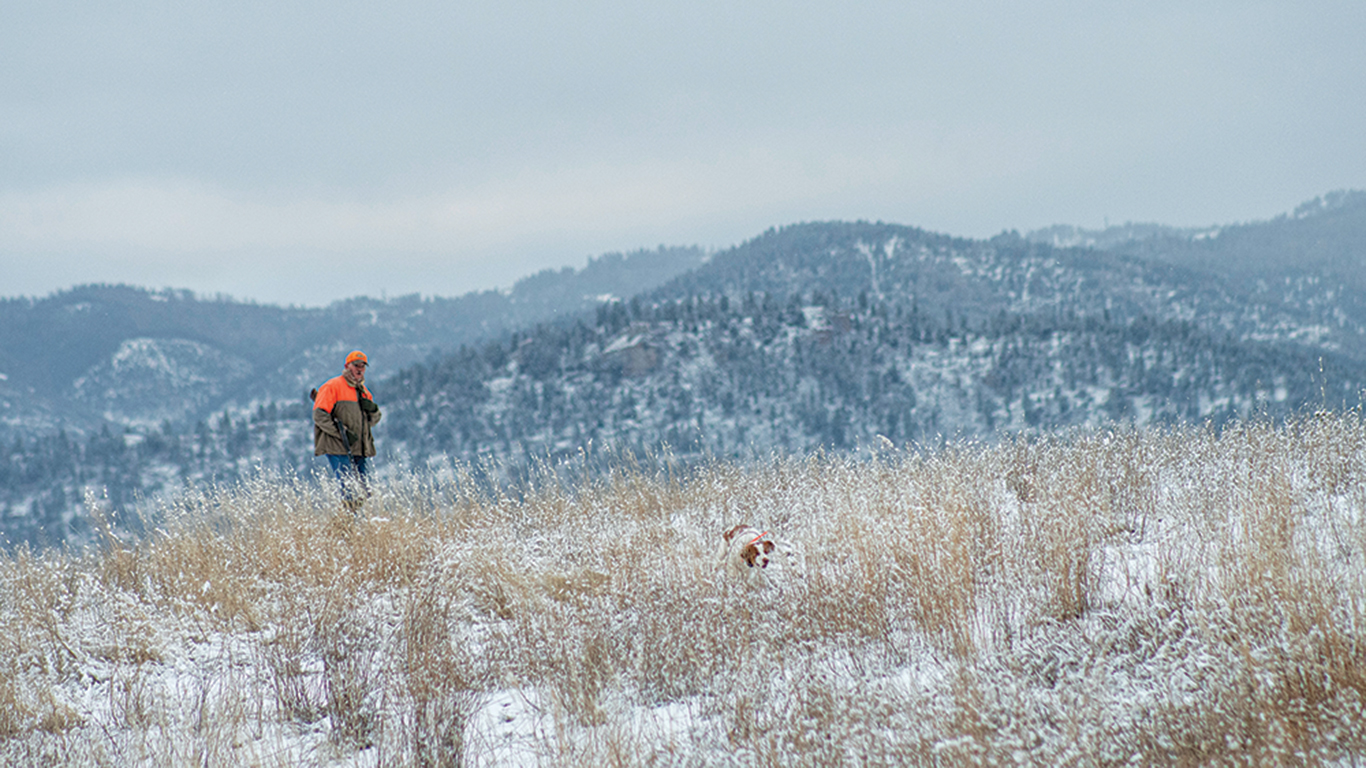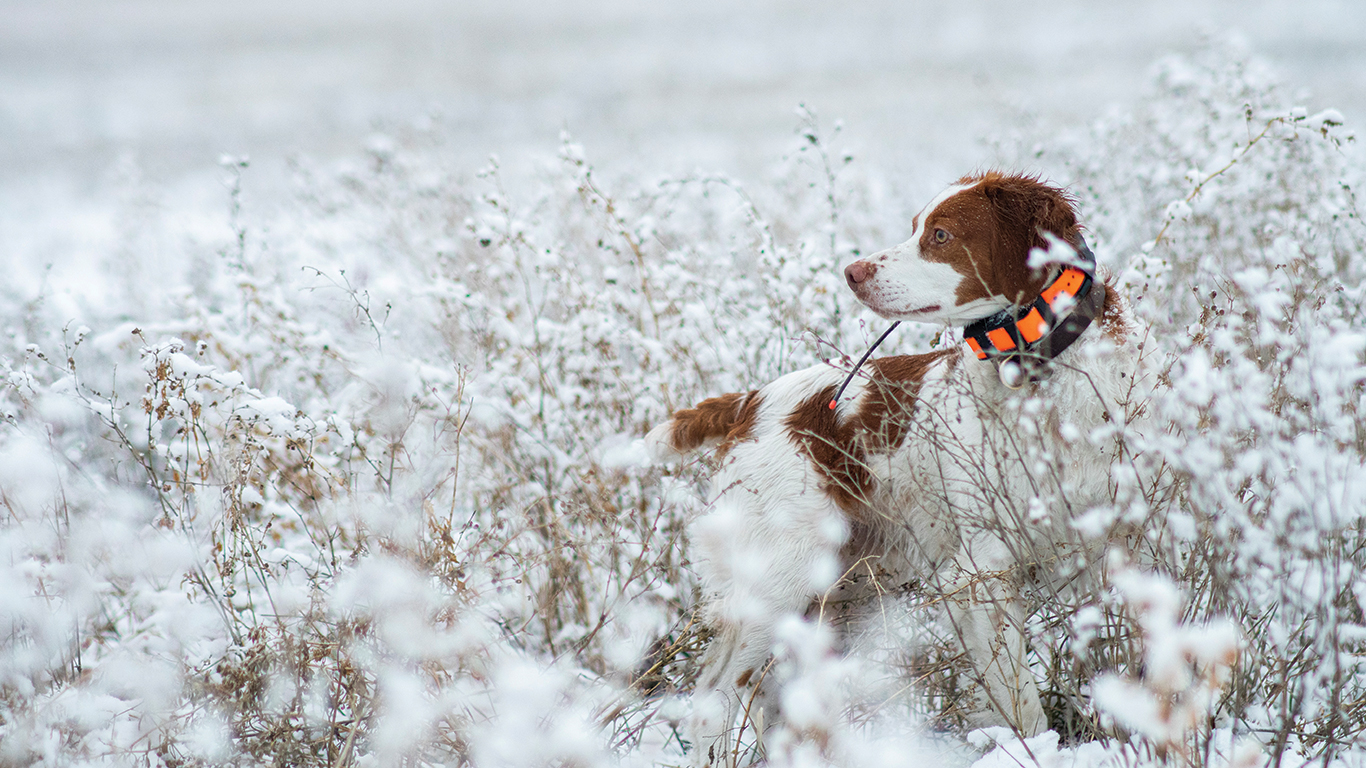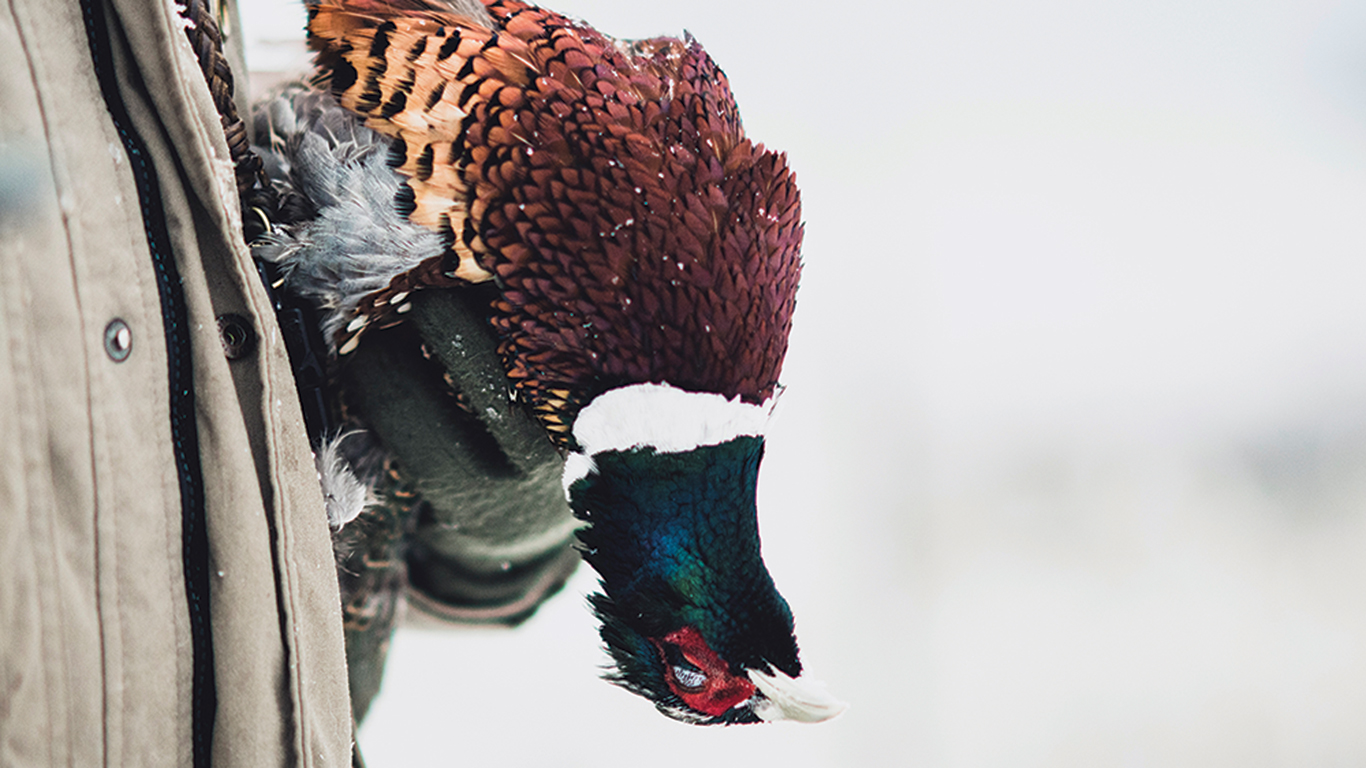The Rainbow

We were hunting on the edge.
On the edge of a center pivot of corn stubble with corners of dense switchgrass and a shelterbelt of ponderosa pine along its northern boundary.
On the edge of a four-day span of Indian summer in the middle of December. The highs had been running in the low 50s, the clear solstice light filtering down between fair-weather clouds; the breeze from the southwest, hardly enough to stir the grass. But on this morning, with the first sun of the day already warming behind us, there was a blue-black line across the horizon ahead with pearl-gray curtains of rain and snow suspended from the darkest murk. The sky confirmed what the weatherman had predicted—a dose of winter was headed our way.
On the edge of two lives:
One was Freya, the apprentice bird dog, a month deep in her first real bird season. She was showing unmistakable signs of talent amid the frustrating lapses of attention and discipline that are a part of a young dog’s development, but she still had a lot to learn about the birds we were chasing, the cunning of the old ringnecks running ahead of her, the hair-trigger temperament of a covey of bobwhite quail, the unpredictable ways of prairie grouse, sometimes holding to the point, more often flushing 200 yards away and disappearing over the horizon.

The other was Flick. For 11 seasons, he’d been the rock on which every successful hunt was built—the unerring nose, the deep experience with every avian stratagem, the white-hot passion for the hunt. The arthritis in his hips had almost crippled him. His paws were knobby and warted with old injuries. His eyes were clouded with the sclerosis of advancing years. What sustained him was his unquenchable enthusiasm for the coverts and the birds, and so he came along on every trip, ready to contribute half an hour of perfect work in the morning and another at sunset, proving, once again, that the spirit can prevail, even when the flesh is weak.
Considering the approaching storm, I put both dogs down at once, loaded the gun, and set off through the first corner of the field. Flick quartered 10 yards ahead while Freya worked back and forth through the switchgrass near the speed of sound, overrunning her nose, as a young dog will. She’d made her way halfway across the patch when a sudden tendril of scent grabbed her by the nose and nearly broke her neck. Her back skidded to a stop while her front half froze into a point, vibrating like a tuning fork.

I stopped Flick and walked up to see whether the pheasant had held in spite of Freya’s lightning approach. As I stepped in front of her nose, a hen flushed under my feet. I’d already turned to praise her for her work when the rooster followed. She nipped at his tail, and, after I got both feet back on the ground, I managed to remember to swing through him as he curved off to the right. Freya was on him before he bounced the second time. With the first bird in the back of the vest, I turned toward the cover on the leeward side of the shelterbelt.
Flushed with success, Freya disappeared into the trees. Flick continued his methodical way down the edge of the grass as it narrowed, 10 or 20 yards ahead, following his nose. He’d gone about a hundred yards when he turned into the wind and froze. No vibration, no forward lean—just the practiced point of a grizzled veteran. “Let the bird be there,” I thought, as I caught up.
And he was. A young rooster, like molten copper in the morning sun, cackling in surprise at the sudden disturbance. I took him as he flattened out toward the trees and heard the thump as he hit the ground. As the gun came off my shoulder, there was a slap of wing feathers on the grass just behind. I swung around to see a second rooster curving out over the corn stubble. A rushed shot to no effect, and he disappeared over the rise as a third rooster flushed to my left. I stood with two empty shells in the gun and watched as he fled down the edge of the shelterbelt, the red of his flank glowing triumphantly against the pines, before he vanished around the corner.

Flick was standing over the first bird. It was his practice to retrieve the cripples and leave the dead birds to me, after he’d made sure they weren’t going anywhere. I ran my hand down his flank before I picked up the bird—good dog, good dog.
In that moment, a gust of wind slammed down out of the north and a spatter of rain rattled through the grass, still bright in the sunshine. I looked toward the storm clouds, now almost overhead—a rainbow spanned the northern horizon, the spectrum glowing against the darkness.
The High Plains are rainbow country. In June when the thunderstorms mutter and grumble across the grass nearly every afternoon, there may be one a week. But, in nearly 70 years, this was the first one I’d ever seen in December.
I whistled for Freya and headed back to the truck. We had a long way to go, and there was a good chance the rain would turn to snow before we made it home. As I walked, I considered the rainbow.

The physical explanation is straightforward enough, al-though for me, the idea that uncounted trillions of raindrops could act in unison to create an immense projection against the sky has always seemed somehow supernatural. I’ve always harbored the suspicion that the old understanding was more accurate, that the rainbow was a sign from somewhere outside the world we understand. The Norsemen saw it as a bridge between this world and heaven. The Old Testament says it is a signature, recognizing a covenant between the living things on Earth and a forgiving God.
As it turned out, that pheasant was Flick’s last. Two weeks later, I found him lying on the cold concrete floor of the basement, unable to get up. A visit to the vet confirmed my worst fears—the calcified arthritis in his spine and hips was finally bringing unbearable pressure to bear on critical nerves. He was in pain and could not stand. And so I asked for the last shot. As he slipped away, I whispered in his ear, through the tears: “Good dog. Good dog.”
In the months since, I’ve often thought back to that last point under the span of an impossible rainbow. I’m inclined to believe that it was sent to Flick, an affirmation of a life lived in unwavering commitment to the discipline he had been born to follow. Or maybe little Freya shared in that moment of celestial recognition, the two of them on opposite ends of the great arc. Young and old. Promise and perfection.
Even now, I’m not sure. We hunters have been inclined toward superstition for as long as we’ve followed the chase, for longer than we’ve been human. It’s possible that we should give up the old instincts—modern skepticism may be the only lens through which we should contemplate the world. But moments like these leave me wondering.
I know this for certain, though: From that day on the edge of things to the end of my days, whenever I see a rainbow, I’ll think of the dogs I’ve known, and the birds, and, most of all, the wild places that have beckoned and whispered their secrets in my ear. May we all meet again…on the other end of the rainbow.


























